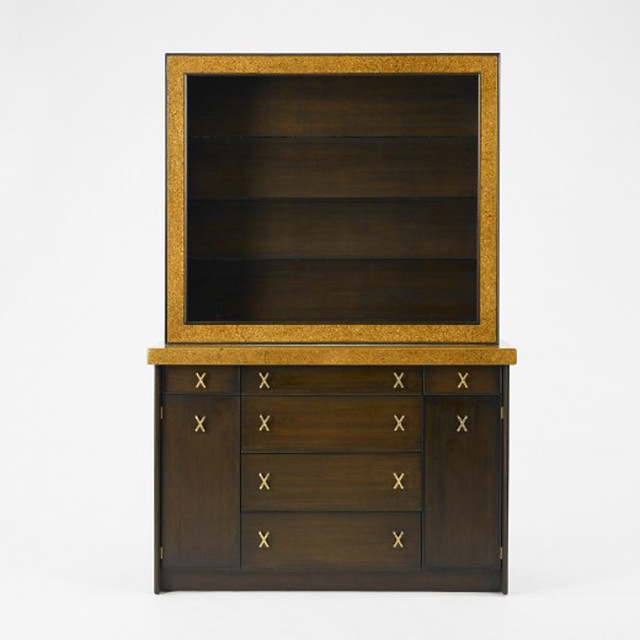aka
the city never sleeps (here)
"In the early 1920s, Paul Frankl opened a New York City shop that became an epicenter of American Modernism. Over the next decades, his work encompassed everything from individual pieces of furniture and decorative accessories to entire interiors, and his style continuously evolved, from early “Skyscraper” furniture to relaxed and casual designs favored by the Hollywood elite in the 1930s to manufactured pieces for the mass market in the 1950s." (buy the book here)


Paul T. Frankl (1886–1958), an Art Deco furniture designer and maker, architect, painter and writer from Vienna, Austria, was the son of a wealthy real estate speculator. After Frankl completed his architectural studies at the Berlin Polytechnic, he traveled, spending time in Berlin and Copenhagen before arriving in the United States in April 1914. He settled in New York City and brought with him an outsider’s fresh perspective and an enthusiasm for forging a uniquely American design aesthetic.
Frankl began as an architect and later switched to designing and painting fine art and furniture. In the years between the two world wars he, more than any other designer, helped shape the distinctive look of American modernism. In the 1920s, he introduced his celebrated SKYSCRAPER STYLE (before turning to metal furnishings in the 1930s). Frankl opened Frankl Galleries on 48th Street, calling his company Skyscraper Furniture, which became an epicenter of American modernism, including modern textiles and wallpapers imported from Europe.. (wikipedia)
-------
Paul Evans (1931 – 1987) Pennsylvanian Paul Evans studied sculpture and silversmithing at several institutions, including the Cranbrook Academy of Art. In 1951, while working as an artist in residence as a silversmith at the working history museum Sturbridge Village near Springfield, Massachusetts, Evans frequented artisan Phillip Lloyd Powell’s shop in New Hope, PA and asked Powell if he could put a few of his own pieces on display. In 1956 Evans moved permanently to New Hope and his acquaintance with Powell turned into a business and creative partnership. In the late 1950s Evans began making copper chests with decorative doors, followed by sculpted steel-front cabinets that revealed Evans' unique way with welding. Evans and Powell had big break when they had a two-man show in 1961 at America House, an exhibition held at the Museum of Contemporary Crafts in New York, now named the Museum of Arts & Design. In 1964 Evans became the designer for furniture manufacturer Directional. With Directional, Paul Evans introduced his highly collectible editions such as the Argente series, Sculpted Bronze series, and the very popular CITYSCAPE SERIES.
Most Evans pieces were signed, and all of the custom items have a signature and a date. Paul Evans took a unique approach to furniture making, a combination of handcraft wedded to technology that anticipated the limited edition art furniture of today, such as the work of Ron Arad. More particularly, the artist’s relationship with Directional set a unique standard for creative manufacture by insisting every piece is made by hand, finished by hand, supervised by the artist at each step of production, one piece at a time.
(via here)
-------------------
You can hear the sound , Of the underground trains
You know it feels like distant thunder, You know there's so many people Living in this house
And don't even know their names, I guess it's just a feeling - in the city
(Eurythmics)
------------------------------------
